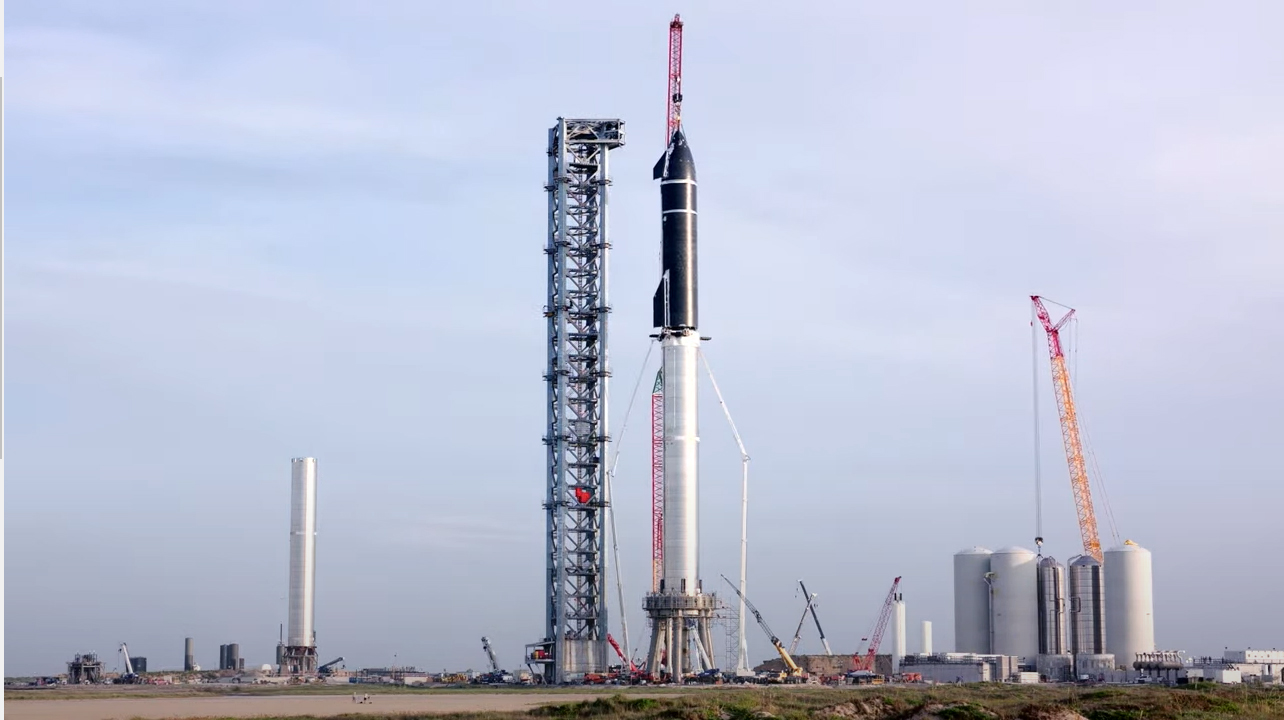
SpaceX's huge Starship rocket for eventual trips to the moon and Mars could go orbital for the first time just two months from now, if all goes according to plan.
SpaceX is developing Starship to take people and cargo to the moon, Mars and beyond. The vehicle consists of two elements: a first-stage booster called Super Heavy and an upper-stage spacecraft known as Starship.
Starship and Super Heavy are both designed to be completely and rapidly reusable, and both will be powered by SpaceX's new Raptor engine — 33 for Super Heavy and six for Starship. It's a challenge to build so many engines, but SpaceX is on track to have enough for the first Starship orbital test flight soon, company founder and CEO Elon Musk said.
Related: SpaceX's Starship will reach orbit this year on road to Mars
"We’ll have 39 flightworthy engines built by next month, then another month to integrate, so hopefully May for orbital flight test," Musk tweeted on Monday (March 21).
That target is also dependent on the timely resolution of an environmental review that the U.S. Federal Aviation Administration (FAA) is conducting of Starship launch operations at Starbase, SpaceX's facility in South Texas. That view is scheduled to wrap up by March 28, FAA officials have said.
SpaceX has performed a number of Starship test launches already, but those have involved prototype upper-stage vehicles with a maximum of three Raptor engines that flew just 6.2 miles (10 kilometers) high or so. The upcoming orbital test flight will mark the first-ever launch of a Super Heavy as well as the first liftoff of a six-engine Starship.
Get the Space.com Newsletter
Breaking space news, the latest updates on rocket launches, skywatching events and more!
The Super Heavy booster will splash down in the Gulf of Mexico shortly after liftoff. The Starship upper stage, meanwhile, will power its way to orbit, circle our planet once, and splash down in the Pacific Ocean, near the Hawaiian island of Kauai, if all goes according to plan.
The target timeline for the debut orbital Starship flight has shifted to the right multiple times over the past year or so — hardly an unexpected occurrence in the development of a new launch vehicle, especially one that has not yet run the full regulatory gauntlet.
Mike Wall is the author of "Out There" (Grand Central Publishing, 2018; illustrated by Karl Tate), a book about the search for alien life. Follow him on Twitter @michaeldwall. Follow us on Twitter @Spacedotcom or on Facebook.
Join our Space Forums to keep talking space on the latest missions, night sky and more! And if you have a news tip, correction or comment, let us know at: community@space.com.

Michael Wall is a Senior Space Writer with Space.com and joined the team in 2010. He primarily covers exoplanets, spaceflight and military space, but has been known to dabble in the space art beat. His book about the search for alien life, "Out There," was published on Nov. 13, 2018. Before becoming a science writer, Michael worked as a herpetologist and wildlife biologist. He has a Ph.D. in evolutionary biology from the University of Sydney, Australia, a bachelor's degree from the University of Arizona, and a graduate certificate in science writing from the University of California, Santa Cruz. To find out what his latest project is, you can follow Michael on Twitter.









